


Elma Dill Russell Spencer Series in the West and Southwest
Series · 19
books · 1982-2022
Books in series

#6
Juan Davis Bradburn
A Reappraisal of the Mexican Commander of Anahuac
1982
Winner of the Summerfield G. Roberts Award, this provocative revisionist look at a Mexican official long vilified in Texas gives a new perspective on specific events involving Juan Davis Bradburn. It also helps to explain early stages of the Texas war for independence in terms of the refusal of Anglo settlers to accept the "un-American" laws and customs of Mexican Texans.

#11
Mexican War Journal and Letters of Ralph W. Kirkham
1993
We sell Rare, out-of-print, uncommon, & used BOOKS, PRINTS, MAPS, DOCUMENTS, AND EPHEMERA. We do not sell ebooks, print on demand, or other reproduced materials. Each item you see here is individually described and imaged. We welcome further inquiries.

#12
The Texas Longhorn
Relic of the Past, Asset for the Future
1994
This brief and entertaining history of the Texas Longhorn details the development of the first distinct American breed of beef cattle. The Spanish herds that had roamed Texas for generations, when mixed with English Longhorns brought by Anglo settlers in the early 1800s, yielded a rangy hybrid that could thrive in Texas’ climate and was ideally suited to ranchers’ aspirations.
Almost extinct by the turn of the century, the Texas Longhorn was preserved by the efforts of just a few people who recalled with fondness the days when the cattle had thundered on the trails. Some U.S. Forest Service officials, several ranchers, and even a folklorist—J. Frank Dobie—gathered the animals for breeding and successfully managed the small herds until they stabilized and began to increase. The Texas Longhorn Breeders Association of America was formed in 1964 to preserve and promote the breed, and a growing interest in improving health by eating leaner meat has spurred renewed interest in the lean Longhorn as more than just a nostalgic novelty.

#15
Massacre on the Lordsburg Road
A Tragedy of the Apache Wars
1997
In the spring of 1883 Apache raiders massacred Judge H.C. McComas and his wife Juniata and kidnapped their six-year-old son Charley as the family traveled on a desolate road in southwestern New Mexico Territory. At the time, the circumstances leading to this tragic incident were not fully understood. In Massacre on the Lordsburg Road, historian Marc Simmons brings to light one of the last massacres of the Indian wars, revealing exactly why and how the three McComases met their deaths. Simmons recounts the raids leading up to the massacre and Gen. George Crook's subsequent Sierra Madre campaign. This was the first use of the "Hot Pursuit Treaty" signed between the United States and Mexico in 1882, allowing troops of either country to follow hostile Indians across the border. The reason why a reputably wise and able man like Judge McComas would lead his family into such grave danger, the pursuit of the Apaches into Mexico by General Crook, and the ironic circumstances of Charley McComas' death during an attack by Crook's troops on the Apache camp illustrate that past events were as complex and sometimes as confusing as those today. Though academically thorough in its exploration, the popular style of delivery of Massacre on the Lordsburg Road will capture and hold the interest of general readers of Indian history.

#19
The Plains Indians (Volume 19)
1998
For the Plains Indians, the period from 1750 to 1890, often referred to as the traditional period, was an evolutionary time. Horses and firearms, trade goods, shifting migration patterns, disease pandemics, and other events associated with extensive European contact led to a peak of Plains Indian influence and success in the early nineteenth century. Ironically, that same European contact ultimately led to the devolution of traditional Plains Indian society, and by 1870 most Plains Indian peoples were living on reservations.
In The Plains Indians Paul H. Carlson charts the evolution and growth of the Plains Indians through this period of constant change. Carlson examines, among other aspects of these tribal groups, the horse and bison culture, the economy and material culture, trade and diplomacy, and reservation life. In its examination of cultural change, The Plains Indians relies heavily on Indian voices and stresses an Indian viewpoint.
Carlson argues that the Plains Indians were neither passive recipients of these cultural changes nor helpless victims. They took what was new and adapted it to and integrated it into their own culture. Even when faced with a significantly altered life on the reservations, the Plains Indians, "without abandoning their cultural base[,] . . . adopted sedentary lifeways and shifted
toward new life patterns, new sodalities, and different characteristics of community."
Carlson also investigates the role of the environment in the lives of the plains tribal groups. The ecological exploitation of bison was an integral part of their society; both their material and spiritual worlds depended on bison. The Plains Indians, while not living in perfect harmony with the environment, to some extent adjusted their hunting practices, religious ceremonies, and social organization to the seasons, the bison, and other environmental factors, such as the herding requirements of their horses.
The Plains Indians is a clear, well written narrative history of the Plains Indians during a vital and well known era in Indian and American history. Those interested in Indian anthropology and history will value this cohesive overview of Plains Indian society and culture.

#20
The Conquest of the Karankawas and the Tonkawas, 1821-1859
1999
In 1821, although Spain claimed what is now Texas, American Indian groups occupied it. Less than forty years later, they had been largely displaced, and their subsistence economy, supplemented by raiding and trade, had been replaced by an Anglo-Texan agricultural economy linked to a rapidly expanding and industrializing capitalist system.
For the Karankawas and the Tonkawas, the period from 1821 to 1859 was particularly devastating. Once thriving communities, the Karankawas survived only as scattered individuals after a small remnant on the banks of the Rio Grande was massacred, and the few remaining Tonkawas had been pushed across the Red River into Indian Territory.
Kelly Himmel has written an account of this conquest that gives new understanding of the processes. He explores geopolitical and economic factors, as well as the role of individual and collective human actors and the effects of cultural orientations of the conquered and conquering groups toward each other.
Among his findings is the importance of geopolitical location. During the early Spanish period, the coastal Karankawas offered a buffer against French, English, and Anglo-American intrusion into Texas. Later, during the early days of Anglo-American settlement, the Tonkawas provided a barrier against the Wichitas and Comanches. For both groups, when the threat to their European-origin allies ended, so did the alliances. In considering the social construction of the “other,” he describes how early trade patterns predisposed Anglo-Texans to characterize Karankawas as cannibals, while viewing the Tonkawas, for whom much stronger evidence of cannibalism exists, as harmless beggars and petty thieves.
Through the detailed analysis of factors such as these, Himmel not only portrays a period in the history of these two peoples that has been largely unstudied, but also offers lucid explanations of the framework of Anglo-Texan conquest. Historians, sociologists, and anthropologists will find new insight and information in this valuable addition to the literature on Texas Indians and Texas history.

#21
Chiricahua Apache Women and Children
Safekeepers of the Heritage (Volume 21)
2000
White Painted Woman appears in ancient myths of the Chiricahua Apaches as the virgin mother of the people and the origin of women’s ceremonies. Such Chiricahua myths and traditions have closely prescribed the roles of women in relation to their husbands and children, to relatives and extended families, and to the band or tribe. One of those roles is to safeguard and hand on to the next generation the lore and customs of the people. In this way, Chiricahua women have served as safekeepers of a heritage that is now endangered. For more than a decade, H. Henrietta Stockel has moved with remarkable freedom and intimacy among the Chiricahuas, especially in the women’s friendship circles. With their permission and even blessing, she has observed and recorded aspects of their traditional culture that otherwise might be lost to history.Chiricahua Apache Women and Children, written in a familiar, personal style, focuses on the duties and experiences of historical Chiricahua Apache women and the significant influences they have exerted within the family and the tribe at large.After beginning with a look at creation myths, Stockel turns to family patterns and roles. She describes in detail the puberty ceremony she has repeatedly witnessed, a ceremony little known by those outside the band. Stockel looks also at the alternative lifestyle, also culturally prescribed, of four women warriors. She concludes with Mildred Cleghorn, a contemporary “woman warrior” who was chairperson of the Fort Sill Chiricahua/Warm Springs Apache Tribe in Oklahoma for nearly twenty years and who was also Stockel's close friend and “Apache mother.” Beautifully complemented with thirty-two black-and-white illustrations of women, children, and family life, Chiricahua Apache Women and Children offers a vivid glimpse into traditional Chiricahua Apache women’s lifestyles.

#25
The Robertsons, the Sutherlands, and the Making of Texas
2006
All Texans, or their ancestors, started as something else. The families that came here molded the state and were molded by it. Anne H. Sutherland explores just how the experiences of two of the early Anglo land-grant families—the Robertsons and the Sutherlands—shaped Texas events and how they handed down those experiences from one generation to another, transforming two Scots-Irish families into what in hindsight we have branded Anglo-Texans. The story of these two pioneering families, told through their letters, poems, diaries, and oral histories, embodies western expansion and political upheaval. Settling in central and southeast Texas, these families struggled to build a new Texas and make a life for their children. The Texas revolution and the Civil War acted as catalysts for the emergence of their Texan identity. A unique blend of family and Texas history, Sutherland’s Made in Texas: A Family Tale positions personal stories as windows of insight onto Texan identity. She peels back the layers of family tradition and textbook history to show how her forebears experienced the transforming events of the settlement of Texas and its war for independence. As new generations emerged, each contributed its own anecdotes and historical context from the time period. By placing the families within Texas history, Sutherland effectively and innovatively traces identity from the early nineteenth century to today. As settlers in the western wilderness, the Robertsons, the Sutherlands, and others like them actively shaped Texas, even as they were changed themselves.

#29
Colonial Natchitoches
A Creole Community on the Louisiana-Texas Frontier
2008
Strategically located at the western edge of the Atlantic World, the French post of Natchitoches thrived during the eighteenth century as a trade hub between the well-supplied settlers and the isolated Spaniards and Indians of Texas. Its critical economic and diplomatic role made it the most important community on the Louisiana-Texas frontier during the colonial era.
Despite the community’s critical role under French and then Spanish rule, Colonial Natchitoches is the first thorough study of its society and economy. Founded in 1714, four years before New Orleans, Natchitoches developed a creole (American-born of French descent) society that dominated the Louisiana-Texas frontier.
H. Sophie Burton and F. Todd Smith carefully demonstrate not only the persistence of this creole dominance but also how it was maintained. They examine, as well, the other ethnic cultures present in the town and relations with Indians in the surrounding area.
Through statistical analyses of birth and baptismal records, census figures, and appropriate French and Spanish archives, Burton and Smith reach surprising conclusions about the nature of society and commerce in colonial Natchitoches.

#32
We Never Retreat
Filibustering Expeditions into Spanish Texas, 1812-1822
2015
The term “filibuster” often brings to mind a senator giving a long-winded speech in opposition to a bill, but the term had a different connotation in the nineteenth century—invasion of foreign lands by private military forces.
Spanish Texas was a target of such invasions. Generally given short shrift in the studies of American-based filibustering, these expeditions were led by colorful men such as Augustus William Magee, Bernardo Gutiérrez de Lara, John Robinson, and James Long. Previous accounts of their activities are brief, lack the appropriate context to fully understand filibustering, and leave gaps in the historiography.
Ed Bradley now offers a thorough recounting of filibustering into Spanish Texas framed through the lens of personal and political motives: why American men participated in them and to what extent the US government was either involved in or tolerated them.
“We Never Retreat” makes a major contribution by placing these expeditions within the contexts of the Mexican War of Independence and international relations between the United States and Spain.

#33
The Texas That Might Have Been
Sam Houston's Foes Write to Albert Sidney Johnston
2009
Although Sam Houston would eventually emerge as the dominant shaper of the developing Texas Republic's destiny, many visions competed for preeminence. One of Houston's sharpest critics, Gen. Albert Sidney Johnston, is the subject of this fascinating edition of letters from the period.
Donald E. Willett offers new annotation and analysis to these letters from Johnston's colleagues, friends, and supporters—first collected and edited by contrarian scholar Margaret Swett Henson, but never before published.

#35
The Texas Left
The Radical Roots of Lone Star Liberalism (Volume 35)
2010
The Texas Left. Some would say the phrase is an oxymoron.
For most of the twentieth century, the popular perception of Texas politics has been that of dominant conservatism, punctuated by images of cowboys, oil barons, and party bosses intent on preserving a decidedly capitalist status quo.
In fact, poor farmers and laborers who were disenfranchised, segregated, and, depending on their ethnicity and gender, confronted with varying levels of hostility and discrimination, have long composed the "other" political heritage of Texas. In The Texas Left, fourteen scholars examine this heritage.
Though largely ignored by historians of previous decades who focused instead on telling the stories of the Alamo, the Civil War, the cattle drives, and the oilfield wildcatters, this parallel narrative of those who sought to resist repression reveals themes important to the unfolding history of Texas and the Southwest.
Volume editors David O'Donald Cullen and Kyle G. Wilkison have assembled a collection of pioneering studies that provide the broad outlines for future research on liberal and radical social and political causes in the state and region.
Among the topics explored in this book are early efforts of women, blacks, Tejanos, labor organizers, and political activists to claim rights of citizenship, livelihood, and recognition, from the Reconstruction era until recent times.
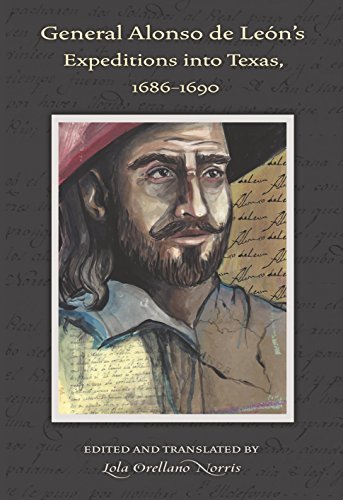
#36
General Alonso de León's Expeditions into Texas, 1686-1690
2017
In the late seventeenth century, General Alonso de León led five military expeditions from northern New Spain into what is now Texas in search of French intruders who had settled on lands claimed by the Spanish crown. Lola Orellano Norris has identified sixteen manuscript copies of de León’s meticulously kept expedition diaries. These documents hold major importance for early Texas scholarship. Some of these early manuscripts have been known to historians, but never before have all sixteen manuscripts been studied.
In this interdisciplinary study, Norris transcribes, translates, and analyzes the diaries from two different perspectives. The historical analysis reveals that frequent misinterpretations of the Spanish source documents have led to substantial factual errors that have persisted in historical interpretation for more than a century. General Alonso de León’s Expeditions into Texas is the first presentation of these important early documents and provides new vistas on Spanish Texas.

#37
Drumbeats from Mescalero
Conversations with Apache Elders, Warriors, and Horseholders
2011
In 1945 the hot wind from a nuclear explosion at Trinity Site on a nearby missile range raged across the Mescalero Apache Reservation in south-central New Mexico, killing hundreds of head of livestock and causing sickness among the descendants of some of the most famous Apache heroes in American history. In many ways, this disaster typified what these Apaches had come to expect from the federal government: attention was often accompanied by undesired results.
Four thousand Apaches of the Mescalero, Chiricahua, and Lipan bands now live on this reservation. In twelve remarkable oral history interviews, three generations of Mescalero, Chiricahua, and Lipan Apaches reflect on the trials of the past, the challenges of the present, and hope for the future. A common thread among all of the interviewees is a collective memory of their people as formidable enemies of the U.S. government in the not-too-distant past.
Author and ethnographer H. Henrietta Stockel has structured these interviews to encompass three groups of Mescalero Apache society: the elders, the “warriors” (middle-aged), and the “horseholders,” or young apprentices.
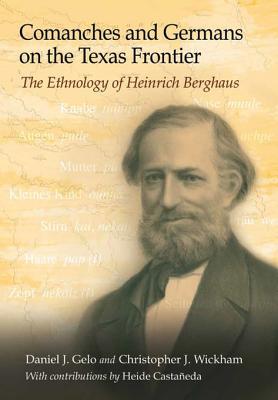
#37
Comanches and Germans on the Texas Frontier
The Ethnology of Heinrich Berghaus
2017
Winner, 2018 Presidio La Bahia Award, sponsored by the Sons of the Republic of Texas In 1851, an article appeared in a German journal, Geographisches Jahrbuch (Geographic Yearbook), that sought to establish definitive connections, using language observations, among the Comanches, Shoshones, and Apaches. Heinrich Berghaus’s study was based on lexical data gathered by a young German settler in Texas, Emil Kriewitz, and included a groundbreaking list of Comanche words and their German translations. Berghaus also offered Kriewitz’s cultural notes on the Comanches, a discussion of the existing literature on the three tribes, and an original map of Comanche hunting grounds. Perhaps because it was published only in German, the existence of Berghaus’s study has been all but unknown to North American scholars, even though it offers valuable insights into Native American languages, toponyms, ethnonyms, hydronyms, and cultural anthropology. It was also a significant document revealing the history of German-Comanche relations in Texas. Daniel J. Gelo and Christopher J. Wickham now make available for the first time a reliable English translation of this important nineteenth-century document. In addition to making the article accessible to English speakers, they also place Berghaus’s work into historical context and provide detailed commentary on its value for anthropologists and historians who study German settlement in Texas.Comanches and Germans on the Texas Frontier will make significant contributions to multiple disciplines, opening a new lens onto Native American ethnography and ethnology.
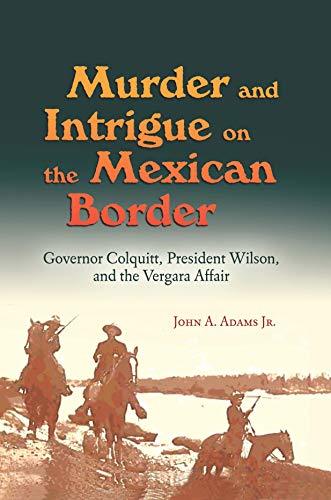
#38
Murder and Intrigue on the Mexican Border
Governor Colquitt, President Wilson, and the Vergara Affair
2018
In early 1914, Clemente Vergara discovered several of his horses missing and reported the theft to local authorities. The Webb County sheriff arranged for the South Texas rancher to meet with Mexican soldiers near Hidalgo to discuss compensation for his loss. Vergara crossed the Rio Grande, soon succumbed to a vicious physical assault, and was jailed. Days after incarceration in Hidalgo, his body was found hanging from a tree. The murder of Clemente Vergara contributed to events that put the United States and Mexico on the brink of war and opened the door for expanded American involvement in Mexico. Texas governor Oscar B. Colquitt seized upon the incident to challenge President Woodrow Wilson—a fellow Democrat—to intervene and even threatened retaliation by the Texas Rangers. Meanwhile, the White House played a larger strategic game with competing factions in the midst of the Mexican Revolution. Wilson’s apparent inaction heightened Colquitt’s demands to guarantee the safety of Americans and their property in the Texas borderlands, and the Vergara affair’s extensive media coverage convinced many Americans that intervention in Mexico was necessary. Author John A. Adams Jr. shows how an otherwise commonplace horse theft and murder revealed a tangled web of international relations, powerful business interests, and intrigue on both sides of the border. Readers will be captivated by Murder and Intrigue on the Mexican Border and the continuing legacy that border events leave on Texas history.
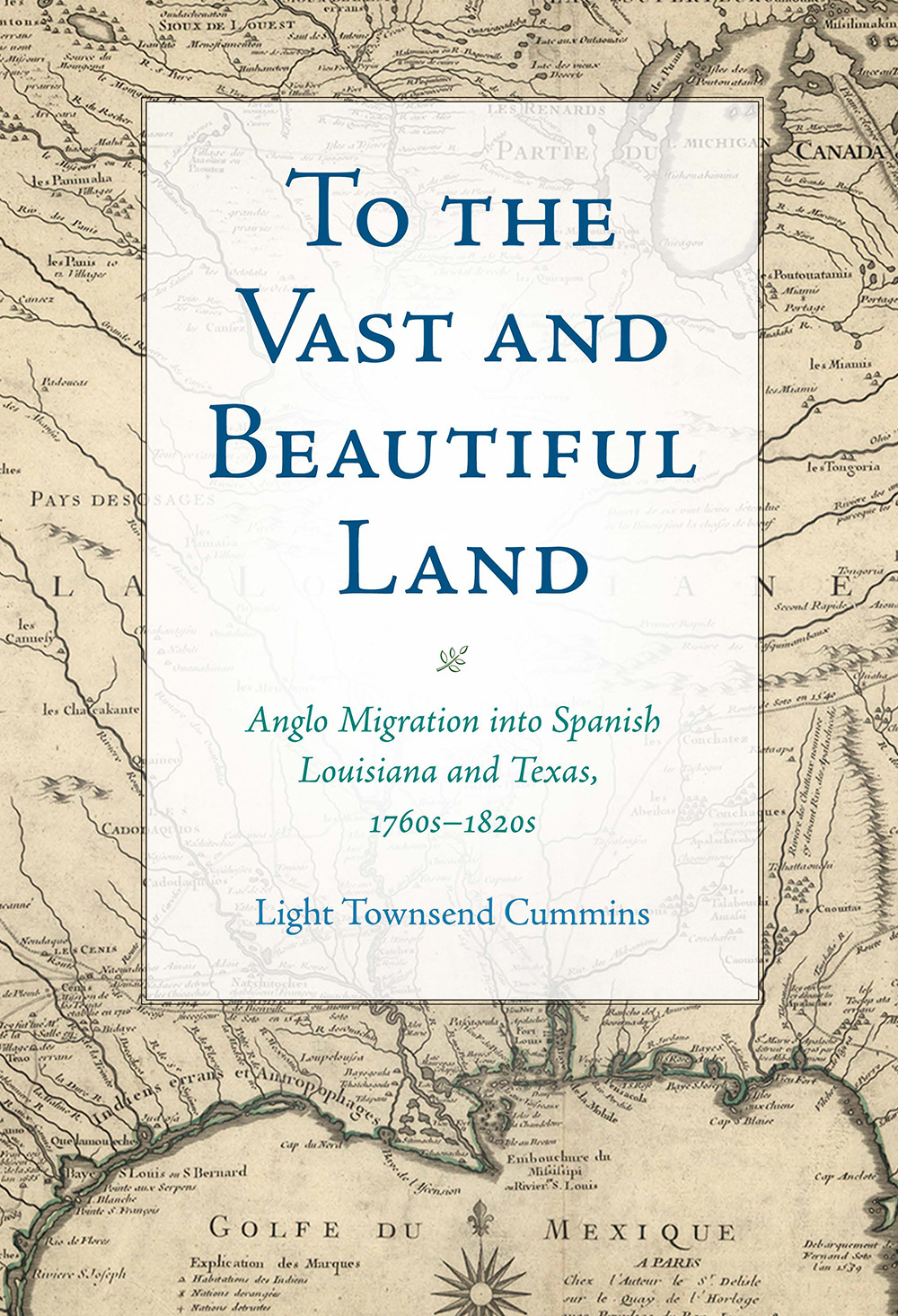
#40
To the Vast and Beautiful Land (Elma Dill Russell Spencer Series in the West and Southwest)
2019
To the Vast and Beautiful Land gathers eleven essays written by Light Townsend Cummins, a foremost authority on Texas and Louisiana during the Spanish colonial era, and traces the arc of the author’s career over a quarter of a century. Each essay includes a new introduction linking the original article to current scholarship and forms the connective tissue for the volume. A new bibliography updates and supplements the sources cited in the essays.
From the “enduring community” of Anglo-American settlers in colonial Natchez to the Gálvez family along the Gulf Coast and their participation in the American Revolution, Cummins shows that mercantile commerce and land acquisition went hand-in-hand as dual motivations for the migration of English-speakers into Louisiana and Texas. Mercantile trade dominated by Anglo-Americans increasingly tied the Mississippi valley and western Gulf Coast to the English-speaking ports of the Atlantic world bridging two centuries, shifting it away from earlier French and Spanish commercial patterns. As a result, Anglo-Americans moved to the region as residents and secured land from Spanish authorities, who often welcomed them with favorable settlement policies. This steady flow of settlement set the stage for families such as the Austins—first Moses and later his son Stephen—to take root and further “Anglocize” a colonial region.
Taken together, To the Vast and Beautiful Land makes a new contribution to the growing literature on the history of the Spanish borderlands in North America.
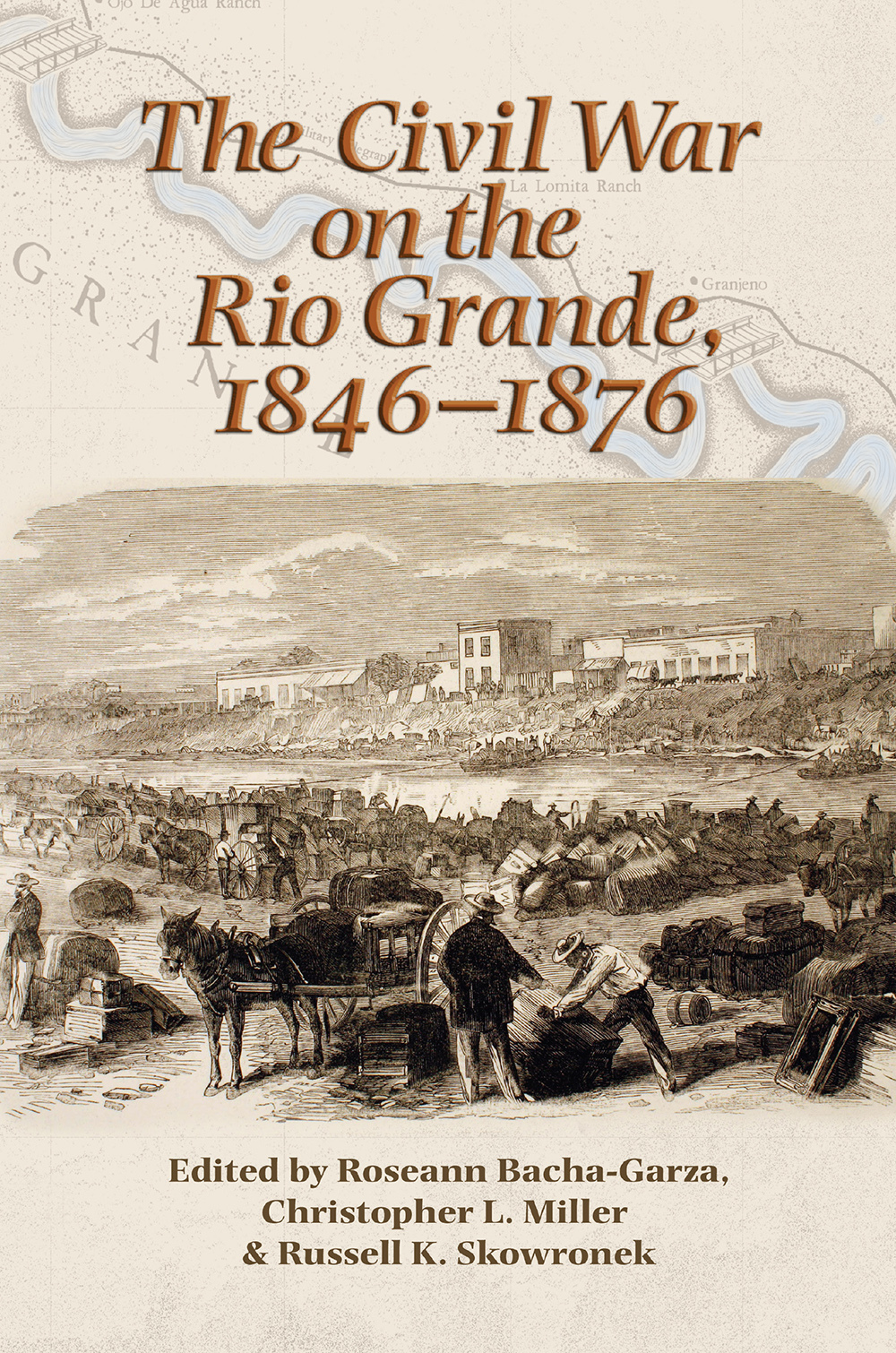
#44
Civil War on the Rio Grande (Elma Dill Russell Spencer Series in the West and Southwest)
2019
2020, Texas Historical Commission's Governor's Award for Historic Preservation was awarded to the Community Historical Archaeology Project with Schools (CHAPS) at the University of Texas Rio Grande Valley. This book grew out of the CHAPS program.
Runner-up, 2019 Texas Old Missions and Forts Restoration Book Award, sponsored by the Texas Old Missions and Forts Restoration Association (TOMFRA)
Long known as a place of cross-border intrigue, the Rio Grande’s unique role in the history of the American Civil War has been largely forgotten or overlooked. Few know of the dramatic events that took place here or the complex history of ethnic tensions and international intrigue and the clash of colorful characters that marked the unfolding and aftermath of the Civil War in the Lone Star State.
To understand the American Civil War in Texas also requires an understanding of the history of Mexico. The Civil War on the Rio Grande focuses on the region’s forced annexation from Mexico in 1848 through the Civil War and Reconstruction. In a very real sense, the Lower Rio Grande Valley was a microcosm not only of the United States but also of increasing globalization as revealed by the intersections of races, cultures, economic forces, historical dynamics, and individual destinies.
As a companion to Blue and Gray on the Border: The Rio Grande Valley Civil War Trail, this volume provides the scholarly backbone to a larger public history project exploring three decades of ethnic conflict, shifting international alliances, and competing economic proxies at the border. The Civil War on the Rio Grande, 1846–1876 makes a groundbreaking contribution not only to the history of a Texas region in transition but also to the larger history of a nation at war with itself.
#45
Capitan Chiquito
A Personal History of an Apache Chief, 1821–1919
2022
Drawn from personal recollections, historical records, and biographical research, Capitan A Personal History of an Apache Chief, 1821–1919 relates the little-known life and career of a leader of the Aravaipa band of Apaches during the late nineteenth and early twentieth centuries. During his nearly 100 years of life, Chief Capitan Chiquito spent time in prison with Geronimo; defended his home territory in Aravaipa Canyon from the depredations of Anglo-Americans, Mexicans, and rival Native American tribes; suffered the brutal massacre and abduction of many of his people; and ultimately won from the federal government the right to live on and cultivate his canyon homestead. He died in 1919 at the age of 98 from complications of influenza while caring for ill members of his clan.
In the opening pages, author John Paul Hartman reminisces about some of the people he has loved—and lost—during his time on the San Carlos Reservation in southeastern Arizona. His wife, Velma Bullis, great-granddaughter of Chief Capitan Chiquito; her father, Lonnie, the chief’s grandson; and many others have preceded him through “the Western portal,” departing this life. “There is nothing for me here in San Carlos now,” he writes. “It is time for me to leave . . . But before they will let me go, I have a story to tell.” As Hartman ends this work, he explains that he undertook the research and writing about his wife’s ancestor as a means of closure for his two decades of life on the San Carlos Reservation. With the care of a historian and the dedication of an enthusiast, he has followed the trail of this notable leader, affording readers a unique view of a previously little-known yet intensely revealing historical narrative.
Authors

Paul H. Carlson
Author · 6 books
Dr. Paul Howard Carlson is a historian, former professor, and former assistant chairman of the Department of History at Texas Tech University. He was also editor of the West Texas Historical Association Year Book (now West Texas Historical Review) for a number of years.
